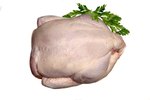
Talapia are hardy fish you can grow in a pool. Disease- and parasite-resistant, they're easy to raise. A large, shallow pool is ideal. Each square yard of water surface can support one adult tilapia. These fish are low-maintenance and inexpensive to feed. Set up the pool one month before you plan to stock it with fingerlings.
Water Quality
Tilapia require a year-round water temperature between 82 and 86 degrees Fahrenheit. Pick a sunny spot to place the pool, and fill it with water to a depth of 3 feet. Tilapia need plenty of oxygen. A filtration system and an air pump with a diffuser will give them the oxygen they need. Test the water for chlorine. Chlorine can be removed by adding 1,000 milligrams of vitamin C for each 100 gallons of water.
Pool Preparation
Plant duckweed and shade-producing water plants in the pool, leaving some areas unplanted and open to sunlight. Algae grow in the sunlight, and tilapia eat algae. Add a 2.5-inch layer of phosphorous-rich fertilizer, such as chicken manure, to the pool one week before adding the fish.
Stocking the Pool
Put the fingerlings in the pool during the early morning or evening hours, when temperatures are cooler. Female tilapia will grow at a slower rate than males. Hormone-treated fingerlings are all male. Purchasing hormone-treated fingerlings prevents breeding as the stock mature. Stock five or six fingerlings for each square yard of water surface. Having too many fingerlings in the pool will result in slower growth and cannibalism.
Feeding Talapia
Tilapia eat the algae that grow in the pool. Adding small amounts of compost or chicken manure to the pool once a month will feed the algae. Too much manure can deplete oxygen levels. Fingerling tilapia have high protein requirements. Flies, grubs and worms will supply the extra protein the fingerlings need. Avoid overfeeding; uneaten food will lower the water quality.
Pool Maintenance
Remove and replace 20 percent of the pool's water weekly, or 10 percent of the water twice a week. Be sure the water you add is chlorine-free. After you harvest the adult tilapia, empty the pool and allow it to dry out completely before preparing it for new fingerlings.
References
Photo Credits
-
Hemera Technologies/Photos.com/Getty Images
Writer Bio
Karen Mihaylo has been a writer since 2009. She has been a professional dog groomer since 1982 and is certified in canine massage therapy. Mihaylo holds an associate degree in human services from Delaware Technical and Community College.




